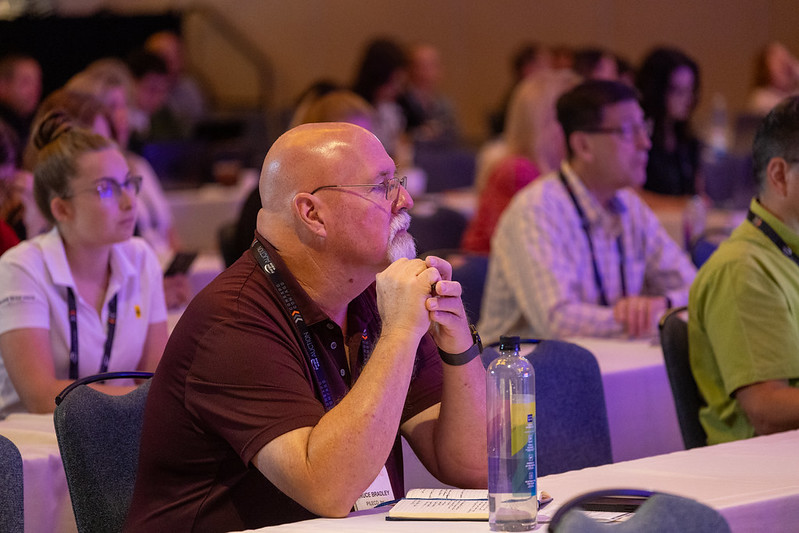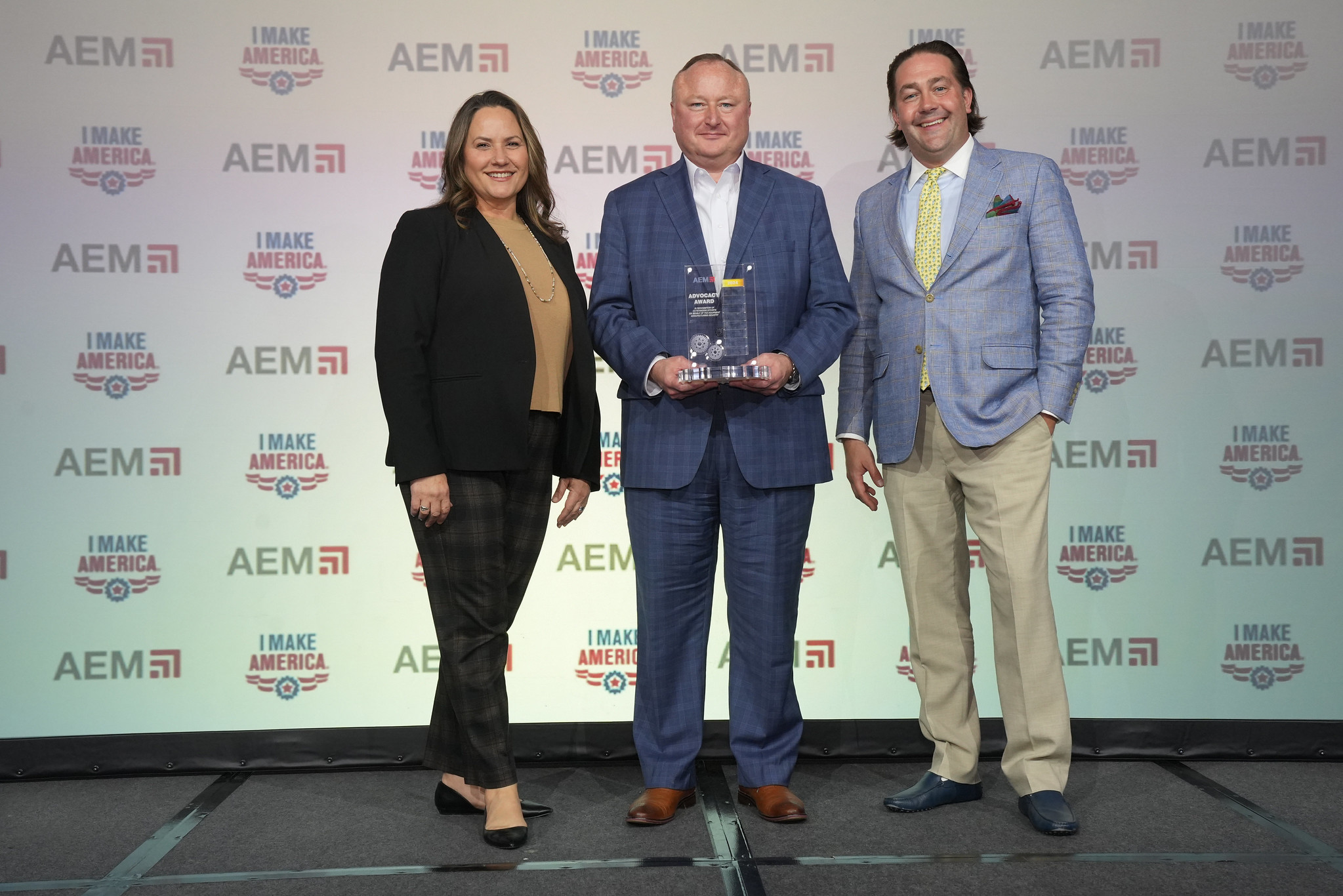By Julie Davis, AEM Senior Director, Workforce and Industry Initiatives, SHRM-CP —
For quite some time now, manufacturers have been carefully watching and planning for workforce changes as baby boomers and other older employees decide to retire.
According to a study by The Manufacturing Institute, the vast majority (78%) of companies indicated that they were ‘very or somewhat’ concerned about the impending aging workforce exodus. More concerning, however, is the concurrent brain drain that accompanies those retirements. For those companies who aren’t yet ready to deal with this pressing issue (or maybe are in the process of addressing it), the following numbers, courtesy of the Panopto Workplace Knowledge and Productivity Report, paint a dire picture:
- As of 2017, nearly 25% of the manufacturing workforce was 55 or older.
- By 2030, one in five Americans will be 65 or older.
- In 2018, the median age of a manufacturing worker was 44.1, compared to 42 for the total labor force.
- Lack of knowledge transfer is estimated to cost large businesses $47 million per year due to time waste, missed opportunities, frustration and delayed projects.
Based on industry research, articles, best practice claims and case studies, the four themes found below have emerged on how the manufacturing industry can effectively address this issue. These themes are fully developed in The Manufacturing Institute’s’ report on Aging in the Manufacturing Workforce and focus on early awareness, having a plan for transferring knowledge at all levels of the organization, retaining older workers when possible, maximizing their productivity and boosting their recruitment efforts.
AEM's Workforce Solutions Toolkit provides easy digital access to workforce best practices designed empower your organization regardless of size, resources, location or sector. Learn more.
Awareness
Awareness is more than just looking around and realizing the industry’s workforce is growing older. While that certainly is the case, now is not the time to ignore the issue or look the other way. Communication is an essential piece of addressing an aging workforce. Creating the right environment for talking about future plans, goals and aspirations, at any age, is key. Incorporating discussion of the future with all employees can keep organizations from being surprised by a sudden retirement. It is also a great way to discuss employee development, to see if employees are engaged with their work, or if they are looking for a new challenge. Open communication can also allow older workers to communicate if working conditions have become physically stressful and, if so, for the employer to offer other alternatives. Communication should create a culture where all workers, including older workers, feel supported, valued and engaged.
Awareness also includes assessing future workforce change in order to understand what positions will need to be filled, and then working to create a plan for the entire team or production chain. When older workers leave, it can set off a ripple effect as team member’s transition or new members are brought in. Early communication can ensure that the entire team is prepared, thoughts and concerns have been addressed, and any training or mentoring has been completed before the retirement takes place.
Knowledge Transfer
Succession planning and knowledge transfer are not activities reserved for top leadership. Think about the organizational information top trade professionals have about process, the quirks of the machines or lines they work on, and how to work best within and across teams. According to a survey of 1,500 baby boomers by Express Employment Professionals, few employers are asking for their knowledge before they leave.
- 57% of baby boomers said they had shared less than half of the knowledge needed to perform their job responsibilities with those who will assume them after they retire.
- 21% said they shared none of their knowledge.
- Only 18% felt they had shared all of their knowledge.
So how can organizations collect that valuable knowledge before it walks away? Begin by understanding that knowledge transfer is not a one-size-fits-all proposition.
Individuals learn and communicate in three basic ways:
- Visual learners -- reading, charts, graphs, and process mapping
- Auditory learners -- someone explains how to do something, questions are asked and answered
- Tactile or kinesthetic learns -- they have to physically do it with their hands to learn it best
These different styles also play into how individuals relay knowledge to another person. That is why having someone write down what they know is seldom the most effective way of capturing tribal knowledge. Mentoring, with access to a blend of communication and hands-on opportunity, is often the most effective. However, mentoring without objectives, check points or accountability, can be a waste of time, so make sure there is an actual structure to any mentoring program.
Knowledge transfer also includes asking the right questions. Here is an excellent starting list taken from a recently published article from Forbes:
- What potential problems might arise in your area?
- What steps are involved in your processes?
- How do you troubleshoot or look for issues?
- Where do you find information or inputs?
- Who else is involved in the process?
- Who do I contact?
- How does what I’m doing affect the rest of the larger process?
- How long should each part of the job take?
- How do I check outputs or handoffs?
- What other questions should we be asking?
Retain and Maximize
Organizations should consider what their workforce projection for the next five years would look like if they could encourage 50% of their retirement-age employees to remain onboard. Engaging workers to keep them longer takes some creativity and flexibility, however. Organizations can review their benefits, policies and practices to encourage older workers to stay longer, or stay in part-time or in consultant roles. Review policies to see if they encourage or discourage employees from staying longer, and consider job sharing or phased retirement plans. When assessing future workforce needs, though, make sure to consider options such as upskilling, cross training or using adaptive equipment. Employees who have a wealth of knowledge might be considered for roles in mentoring, training or apprenticeship program support as well. Flexibility and looking at creative ways to keep institutional knowledge accessible to be passed down is key to keeping disruptions and frustrations to a minimum.
Recruitment
Many companies are re-envisioning recruitment. Those organizations who think they are doing everything they can to recruitment employees may want to take a hard second look in order to remain competitive. It is not just making sure social media posts take place, recruitment also involves community engagement and brand awareness, meaningful relationships with education at both the community college and high school levels, relationships beyond just sponsorships for skill-based non-profits, and the building the type of organizational culture and employee engagement that act as employee magnets locally. With physically fewer bodies looking for work in the country, more jobs across various industry sectors hoping to steal the attention of youth and adults, and projected industry growth that out paces skill-ready employees, every tool in our recruitment toolbox should be examined for effectiveness and sharpened.
Learn More
For more support, ideas or information, visit contact AEM’s Julie Davis at jdavis@aem.org.
For more perspectives from AEM staff, subscribe to the AEM Industry Advisor.





